Starting a blog is an exciting venture, but it can also be overwhelming for beginners. With so many decisions to make and tasks to complete, where do you even begin? In this guide, we’ll break down the essential steps to help you launch your blogging journey successfully.
Key Takeaways
- Choosing a niche is crucial to attract a targeted audience and establish yourself as an expert in a specific area.
- Selecting the right blogging platform, such as WordPress or Blogger, is important for your blog’s functionality and ease of use.
- When choosing a domain name, make sure it reflects your blog’s content, is easy to remember, and avoids trademark infringements.
- The design of your blog plays a significant role in attracting and engaging readers. Opt for a visually appealing and user-friendly layout.
- Setting up your blog involves registering a domain name and selecting a web hosting provider. Consider factors like relevance, ease of use, and technical requirements.
Step 1: Discovering Your Niche

Before starting a blog, finding your niche is a crucial first step that sets the foundation for your blogging journey. Your niche is the specific topic or focus of your blog, giving it a unique identity in the vast online world. By selecting a niche, you can attract a targeted audience and establish yourself as an expert in that particular area.
So, how do you go about finding your niche? Start by considering your interests, hobbies, and areas of expertise. What are you passionate about? What knowledge or skills do you possess that others might find valuable? Remember, your niche should align with your interests, as blogging is an opportunity to share your expertise and connect with like-minded individuals.
Research is also key in selecting the right niche. Look into the market demand for various topics and identify any gaps that you could potentially fill with your blog. This will help you attract and engage a specific audience who are interested in your chosen niche.
Ultimately, your niche should reflect your unique perspective and voice. It should be something that excites you and keeps you motivated to consistently create valuable content for your readers.
Why is Selecting a Niche Important?
“Selecting a niche is like choosing the lens through which you will view and share the world. It helps you stand out in a crowded blogging space and allows you to tailor your content to a specific audience.”
Selecting a niche is important for several reasons:
- Targeted Audience: By focusing on a specific topic, you can attract a targeted audience interested in that niche. This allows you to create content that caters to their unique needs and interests.
- Expertise Establishment: Niche blogging allows you to position yourself as an expert in your chosen area. Over time, as you consistently share valuable insights and information, your readers will perceive you as a trusted and knowledgeable source.
- Content Focus: Having a niche helps you have a clear focus when creating content. It allows you to dive deep into a specific subject, explore various angles, and provide in-depth information to your readers.
- Monetization Opportunities: When you have a dedicated audience interested in your niche, you open up opportunities to monetize your blog. Whether it’s through affiliate marketing, sponsored content, or selling your own products/services, a niche blog attracts advertisers and collaborations that align with your chosen topic.
Finding your niche is a process that requires careful consideration, research, and self-reflection. Once you discover your niche, you’ll be one step closer to building a successful and impactful blog.
Step 2: Choosing a Blogging Platform
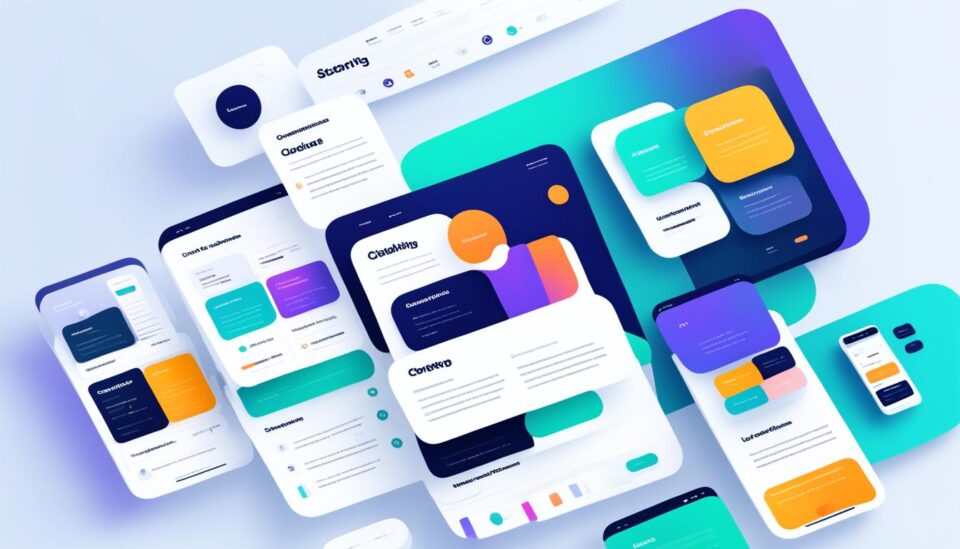
Now that you have decided on your niche, it’s time to choose the right blogging platform for your needs. A blogging platform is the software that allows you to create and manage your blog, publish content, and customize its design. With the plethora of options available today, including popular choices like WordPress, Blogger, and various website builders, it’s important to consider the features and benefits of each platform.
WordPress: WordPress is one of the most popular and widely used blogging platforms. It offers a wide range of themes, plugins, and customization options, making it flexible and suitable for all types of blogs. WordPress is known for its user-friendly interface and robust content management system.
Blogger: Blogger, owned by Google, is another popular choice for bloggers. It is known for its simplicity and ease of use, making it suitable for beginners. Blogger offers a variety of built-in templates and allows you to monetize your blog through Google AdSense.
Website Builders: In addition to dedicated blogging platforms like WordPress and Blogger, there are also website builders that offer blogging capabilities. These platforms, such as Wix, Squarespace, and Weebly, provide drag-and-drop website builders with built-in blogging features, making it easy to create a blog within a comprehensive website building platform.
When choosing a blogging platform, consider factors such as your technical comfort level, customization options, SEO capabilities, e-commerce features, and potential for future growth. Research and compare the pros and cons of each platform to find the one that aligns with your goals and preferences.
Step 3: Selecting a Domain Name

Choosing the right domain name is a crucial step in establishing your blog’s online presence.
Your domain name serves as the web address for your blog, making it easy for readers to find and access your content. When selecting a domain name, it’s important to consider a few key factors:
- Relevance: Your domain name should accurately reflect the content and focus of your blog. Choose a name that gives readers a clear idea of what they can expect when they visit your site.
- Memorability: Aim for a domain name that is easy to remember. Keep it concise, avoid numbers or symbols, and opt for words that resonate with your target audience.
- Avoid Trademark Issues: Conduct thorough research to ensure that your chosen domain name doesn’t infringe upon any existing trademarks. This can help prevent legal issues down the line.
Additionally, your domain name plays a crucial role in branding your blog. It should reflect your blog’s identity and help create a strong and memorable online presence. Take the time to brainstorm and choose a domain name that aligns with your blog’s goals and aspirations.
Step 4: Designing Your Blog
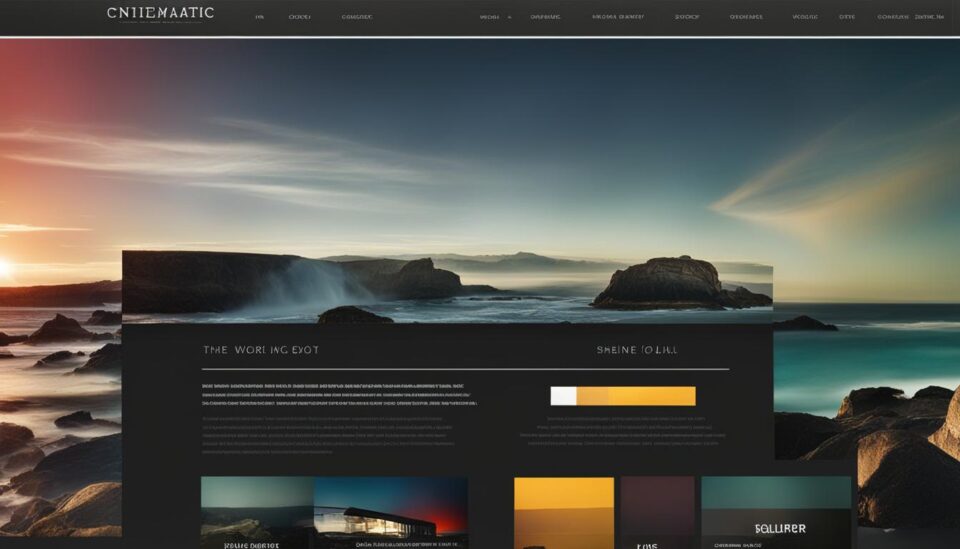
The design of your blog is a key factor in creating a lasting impression on your audience. A visually appealing and user-friendly design can attract and engage readers from the moment they land on your site. To ensure your blog’s success, it’s important to carefully consider its appearance and overall visual appeal.
When designing your blog, start by choosing a clean and organized layout that allows your content to shine. A clutter-free design will make it easier for readers to navigate your site and find the information they’re looking for. Consider using minimalist design elements to create a sleek and modern look.
Colors play a vital role in blog design. Select a color scheme that complements your blog’s theme and creates a pleasant visual experience for your visitors. Keep in mind that different colors evoke different emotions, so choose colors that align with your blog’s content and desired atmosphere.
In addition to colors, typography is another important aspect of blog design. Select fonts that are easy to read and align with your blog’s personality. Consider using a combination of fonts for headings, subheadings, and body text to create visual contrast and hierarchy.
Remember that images are a powerful tool in blog design. High-quality visuals can capture your readers’ attention and enhance the overall visual appeal of your blog. Use relevant images throughout your posts to complement your content and make it more engaging. For example:
As the saying goes, “A picture is worth a thousand words.” Incorporating compelling images into your blog posts can make your content visually appealing and help convey your message more effectively.
By taking the time to design your blog with care and attention to detail, you can create a visually appealing platform that leaves a positive impression on your audience. Remember, a well-designed blog not only attracts readers but also encourages them to explore further and come back for more.
Step 5: Setting Up Your Blog

Once you have decided on your niche, chosen a blogging platform, and designed your blog, the next step is to set up your blog by registering your domain name and selecting a web hosting provider.
Your domain name is the address that will lead readers to your blog. It should be relevant to your blog’s content and memorable for your audience. Take the time to choose a domain name that reflects your blog’s identity and makes it easy for readers to find and remember.
When it comes to web hosting, you need to choose a provider that will host your blog on the internet. Consider factors such as reliability, customer support, and pricing when making your decision. It’s essential to select a web hosting provider that can accommodate your blog’s needs and ensure it runs smoothly.
Domain registration and web hosting are critical steps in setting up your blog. They provide the foundation for your online presence and determine how easily readers can access your content. Remember to consider domain name relevance, ease of use, and technical requirements when setting up your blog, as these factors will contribute to its success.
Step 6: Writing and Publishing Your First Post

Now that your blog is set up and ready to go, it’s time to dive into the exciting world of blog content creation. Writing and publishing your first post is an important milestone in your blogging journey. It’s your opportunity to provide value to your audience and establish your expertise in your chosen niche.
The Power of Blog Content
Your blog’s content is the heart and soul of your online presence. It’s what attracts readers, engages them, and keeps them coming back for more. High-quality content is crucial for building a loyal audience and establishing yourself as an authority in your niche. When crafting your blog posts, consider these essential elements:
- Compelling Headlines: Grab readers’ attention with catchy, descriptive headlines that entice them to click and read your post.
- Engaging Writing Style: Write in a conversational tone that resonates with your audience. Keep your sentences concise and easy to read.
- Valuable Information: Provide valuable insights, tips, and knowledge that your readers can’t easily find elsewhere. Make your content informative and actionable.
- Relevant Images: Enhance your blog posts with relevant and visually appealing images that support and complement your written content.
- Consistent Posting Schedule: Establish a regular posting schedule to keep your readers engaged and coming back for more. Consistency is key for building a loyal audience.
Remember, the goal is to offer something valuable to your readers in each and every blog post. Whether it’s entertaining, educational, or inspiring, your content should leave a lasting impression.
Why Publishing Matters
Once you’ve written and polished your blog post, it’s time to hit that publish button. Publishing your post makes it accessible to your audience, spreading your ideas and expertise to the world. Here’s why publishing is so important:
Publishing is like opening a door to opportunity. It allows you to connect with your audience, attract new readers, and establish your blog’s presence in the online space.
When you publish your content, it becomes discoverable by search engines, enabling new readers to find and engage with your blog. Additionally, publishing regularly helps you establish a rhythm and build momentum in your blogging journey.
So, go ahead and share your knowledge, insights, and stories with the world. Your first blog post is just the beginning of an exciting adventure.
The Importance of Finding Your Unique Voice

When it comes to blogging, finding your unique voice is paramount. Your voice is what sets you apart from other bloggers and enables you to connect with your audience on a deeper level. Embracing your interests, expertise, and passions in your content creation process can create a genuine and authentic experience for your readers.
Unleash Your Authenticity
Authenticity is key when it comes to blogging. Your audience craves originality and a sense of realness. By finding your voice, you can create content that reflects your true self, allowing your readers to connect with you on a personal level. Whether you’re funny, insightful, or thought-provoking, let your true personality shine through your words.
Stand Out in a Crowded Blogosphere
In the vast world of blogging, finding your unique voice helps you stand out from the crowd. With millions of blogs online, having a distinct personality and perspective will attract readers who resonate with your style. This loyal following will appreciate your authenticity and keep coming back for more.
“Your voice is your ultimate blogging superpower. It is what makes you unforgettable.”
Moreover, your unique voice can establish you as an expert in your niche. By sharing your knowledge and insights in a way that is uniquely you, you position yourself as a reliable and trusted source of information. This builds credibility and helps grow your blog’s authority.
Creating an Engaging Connection
When you find your voice, you create a powerful connection with your audience. Your readers will feel like they’re having a conversation with a friend rather than reading a generic blog post. This connection fosters engagement, encourages discussion, and builds a loyal community around your blog.
So, don’t be afraid to find your voice and let it be heard through your blog. Embrace your uniqueness, share your expertise, and provide an authentic experience for your readers. Your blogging journey will flourish as you find your voice and create content that leaves a lasting impression.
Crafting a Memorable Blog Name and Domain

Your blog’s name and domain are the first impressions you make on your audience. A memorable and catchy blog name can pique curiosity and reflect your blog’s identity. Your domain should match your blog name closely and be easy to remember. Consider using name generators and taking your time to find the perfect name.
When coming up with a blog name, think about what makes your content unique and how you want to portray your brand. Brainstorm related keywords and phrases that resonate with your niche and audience. A blog name that aligns with your content can help establish your credibility and attract the right readers.
Additionally, consider the length and simplicity of your blog name. Short and concise names are easier to remember and share. Avoid using complicated words or spellings that may confuse your audience. Keep it simple, catchy, and relevant.
Once you have finalized your blog name, it’s time to choose a domain. Your domain should closely match your blog name to create a cohesive and memorable brand. Use domain registration platforms to check the availability of your desired domain. Aim for a domain name that is easy to type and remember.
Choosing the Right Blogging Platform
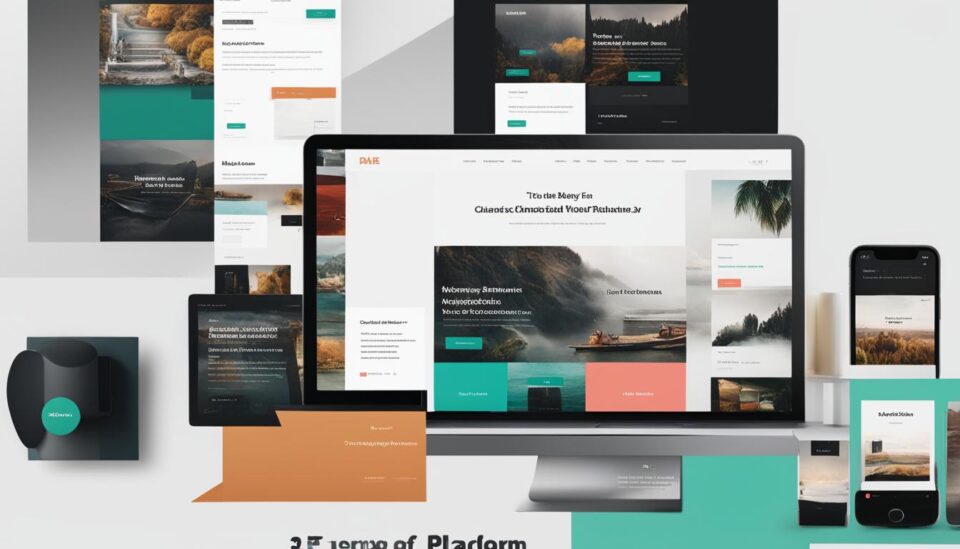
When it comes to launching your blog, selecting the right
blogging platform is a crucial decision. With a myriad of options available, such as WordPress,
Blogger, and Squarespace, it’s important to compare and consider the features and customization
options each one offers.
WordPress is one of the most popular blogging platforms due
to its flexibility and extensive range of plugins and themes. It provides a high level of customization,
making it suitable for both beginners and advanced bloggers. Additionally, WordPress offers
powerful SEO capabilities, allowing you to optimize your blog for search engines.
Blogger, on the other hand, is a user-friendly platform
that integrates seamlessly with other Google services. It’s a great choice for beginners who want a
simple setup process and hassle-free maintenance. While it may not have as many customization
options as WordPress, Blogger offers a solid foundation for bloggers looking to start their journey.
Another option to consider is Squarespace, which
combines blogging and website-building features. It offers visually stunning templates and an easy
drag-and-drop editor, making it ideal for bloggers with a focus on design. Squarespace also provides
built-in e-commerce functionalities, allowing bloggers to monetize their content.
When making your decision, consider your specific
blogging goals, technical comfort level, and long-term plans. Evaluate the features, ease of use, and
customization options each platform offers, as well as their ability to support your blog’s growth and
evolution over time.
Remember, the right blogging platform is the foundation of your online presence. Take your
time to compare and assess different options to ensure you choose the one that aligns with your
blogging vision.
Image:
The Art of Customization: Templates and Themes
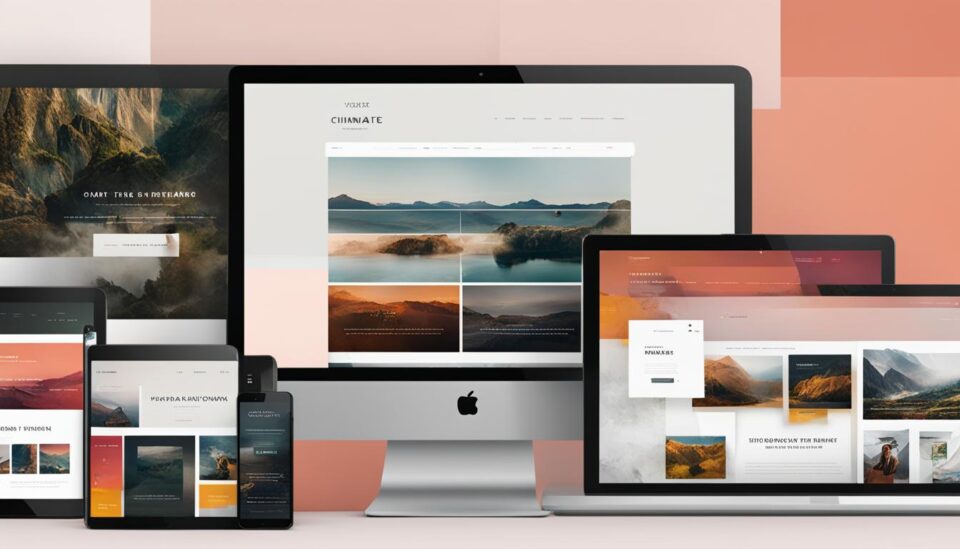
Once you’ve chosen a blogging platform, you can unleash your creativity by customizing the look and feel of your blog using templates and themes. Templates and themes play a crucial role in enhancing your blog’s aesthetics and user experience, allowing you to create a unique and visually appealing online presence.
When it comes to blog customization, the possibilities are virtually endless. Whether you want a minimalistic and clean design or a vibrant and bold layout, there are countless templates and themes available to suit your preferences and reflect your brand’s identity.
Selecting the Right Template
When selecting a template, consider your blog’s niche and desired visual approach. Think about the emotions and impressions you want to evoke in your readers. Are you running a travel blog and aiming for a wanderlust-inspired aesthetic? Or perhaps you’re passionate about fashion and want a template that showcases your style expertise.
Remember that your template should complement your content and enhance its impact. Look for templates that offer the flexibility to incorporate different types of media, such as images, videos, and interactive elements, depending on your blogging goals.
Customizing Your Theme
After selecting a template, it’s time to customize your theme. Most blogging platforms offer an array of customization options, allowing you to personalize your blog’s colors, fonts, layouts, and more.
Consider the following tips when customizing your theme:
- Stick to a consistent color palette that aligns with your brand’s identity.
- Choose fonts that are easy to read and reflect the tone of your content.
- Optimize your blog’s layout to create a seamless and user-friendly browsing experience.
- Ensure your blog is responsive and looks great on different devices, including smartphones and tablets.
Remember, your blog’s design should be visually appealing, but it should also prioritize functionality and usability. Strive for a balance between aesthetics and user experience to create an enjoyable and engaging platform for your readers.
Laying the Foundation: Domain Registration and Hosting

Before launching your blog, it is essential to lay a solid foundation by registering your domain name and selecting a reliable web hosting provider. Your domain name is the web address where your blog will be found, and web hosting is where your blog’s files and data will be stored, making it accessible to visitors.
When it comes to domain registration, consider choosing a domain name that is relevant to your blog’s content and easy to remember. This will help your audience easily find and remember your blog. Take the time to brainstorm and research available domain names to find the perfect fit for your blog.
When selecting a web hosting provider, it is important to consider several factors. Evaluate the different web hosting options available and compare their pricing plans, technical features, reliability, and customer support. A reliable hosting provider will ensure that your blog remains online and accessible to your audience at all times.
Another crucial aspect when choosing a hosting plan is understanding your blog’s needs. Consider the amount of traffic you expect, storage requirements, and any additional features you may require, such as email accounts or e-commerce capabilities. By understanding your needs, you can select a hosting plan that meets your blog’s requirements without overspending or limiting its potential.
By carefully choosing your domain name and web hosting provider, you are establishing the foundation for your blog’s success. Remember to consider factors like the domain registration process, available web hosting options, and choosing a hosting plan that aligns with your blog’s needs. A reliable domain and hosting solution will ensure that your blog remains accessible and provides a seamless experience for your audience.
Installing Your Blogging Platform and Basic Configuration

Once you have registered your domain and set up hosting, it’s time to move on to the next step of launching your blog: installing your chosen blogging platform and performing basic configuration. This section will guide you through the process of setting up your platform and configuring essential settings to optimize your blog for search engines and users.
Installation Process
The installation process may vary depending on the platform you have selected. However, most modern blogging platforms offer user-friendly interfaces that make the installation process simple and straightforward.
Begin by accessing your hosting control panel or cPanel and navigating to the section for installing applications or scripts. Look for your blogging platform in the available options, such as WordPress, Blogger, or other popular platforms. Click on the installation button or link associated with your chosen platform.
Follow the on-screen instructions, providing the required information like your domain name, blog directory, and administrative credentials. After completing the installation process, you will receive a confirmation message or notification indicating that your blogging platform has been successfully installed.
Basic Configuration
With your blogging platform installed, it’s time to perform some basic configuration to optimize your blog’s functionality, appearance, and search engine optimization (SEO). Some of the key settings you should configure include:
- Blog Title: Set a descriptive and memorable title that reflects your blog’s content and purpose.
- Tagline: Craft a brief tagline that sums up the essence of your blog.
- Permalink Structure: Choose a URL structure that is user-friendly and optimized for SEO.
- Default Post Category: Select a default category for your blog posts, ensuring it aligns with your niche.
- Comments Settings: Determine whether you want to allow or disable comments on your blog posts.
- User Roles: Assign and configure user roles and permissions for other contributors, if applicable.
By configuring these basic settings, you lay the foundation for a well-optimized and user-friendly blog. Take your time to explore the configuration options provided by your blogging platform, as each platform may offer additional settings or plugins for customization.
Now that your blogging platform is installed and configured, you are ready to move on to the next steps of launching your blog. In the upcoming sections, we will delve into topics such as blog design, creating essential pages, and producing high-quality content that engages your audience. Stay tuned for more valuable insights!
The Aesthetics of Attraction: Importance of Visual Appeal
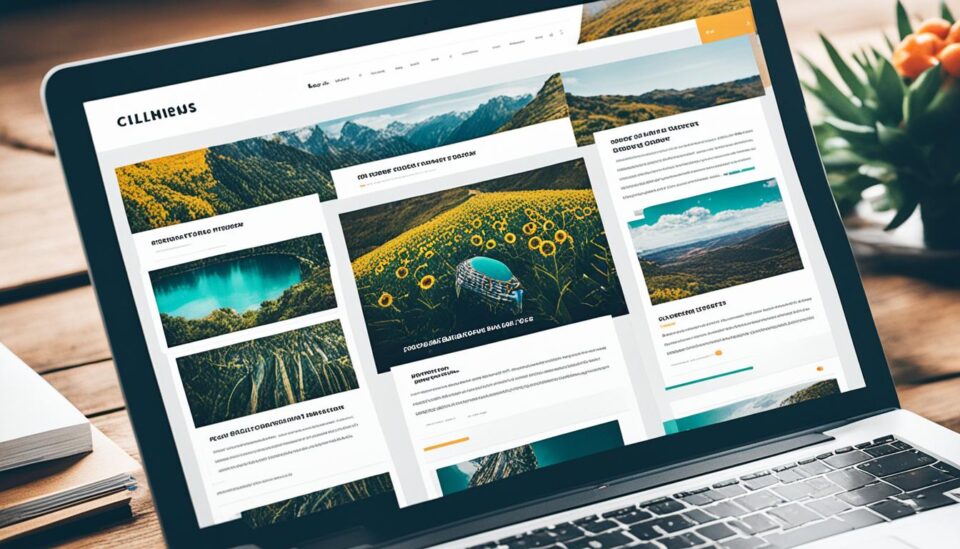
The visual appeal of your blog is essential in capturing the attention and engagement of your readers. A well-designed blog not only creates a welcoming atmosphere but also sets the tone for the content you provide. When designing your blog, it’s crucial to consider various elements that contribute to its visual appeal and overall user experience.
Colors play a significant role in evoking emotions and setting the mood of your blog. Choose a color palette that aligns with your blog’s theme and resonates with your target audience. Whether you opt for vibrant and energetic colors or a more muted and calming palette, make sure it complements your content and enhances readability.
Fonts also play a crucial role in maintaining consistency and readability throughout your blog. Select fonts that are legible and align with your blog’s identity. A combination of fonts can add visual interest, but be cautious not to overdo it, as using too many fonts can create a cluttered and unprofessional look.
The layout of your blog is another key component of its visual appeal. A clear and user-friendly design ensures that readers can navigate your blog effortlessly. Consider using a clean and organized layout that highlights your content and makes it easy for readers to find the information they need.
Adding visual elements such as images and graphics can enhance the visual appeal of your blog’s design. Use relevant and high-quality visuals that complement your content or illustrate your message. Including visually appealing images not only breaks up the text but also makes your blog more visually engaging.
Remember, a visually appealing and user-friendly design is essential for creating a positive first impression. It’s worth investing time and effort into designing a blog that reflects your brand’s identity and captivates your audience’s attention. By paying attention to colors, fonts, layout, and visuals, you can create a visually appealing blog that keeps readers coming back for more.
Key Takeaways
- Visual appeal is crucial in capturing and engaging the attention of readers.
- Choose a color palette that aligns with your blog’s theme and resonates with your target audience.
- Select legible fonts that enhance readability and maintain consistency throughout your blog.
- Design a clean and user-friendly layout that makes navigation easy for readers.
- Incorporate relevant and high-quality visuals to enhance the visual appeal of your blog.
Creating Essential Pages and Writing Quality Content
As you set up your blog, there are a few key components that are essential for a successful online presence. Two important pages that you should create are the About and Contact pages. The About page provides valuable information about your blog’s purpose, your expertise, and what readers can expect from your content. It helps establish a connection with your audience and builds trust.
The Contact page allows readers to reach out to you, whether it’s for collaborations, inquiries, or simply to provide feedback. Including a contact form or your email address makes it easy for readers to get in touch, fostering engagement and building relationships.
While creating these essential pages, remember that high-quality content is the backbone of any successful blog. Writing well-researched, informative, and engaging articles will not only position you as an authority in your niche but also keep your readers coming back for more.
To create content that captures your audience’s attention, focus on addressing their needs, interests, and pain points. Offer valuable information, unique insights, and practical tips that they can apply in their lives. Remember to write in a conversational tone and keep your content well-structured, making it easy for readers to follow along.
FAQ
What are the essential steps to launch your blogging journey?
The essential steps to launch your blogging journey include discovering your niche, choosing a blogging platform, selecting a domain name, designing your blog, setting up your blog, writing and publishing your first post, finding your unique voice, crafting a memorable blog name and domain, choosing the right blogging platform, customizing templates and themes, registering your domain and choosing a web hosting provider, installing your blogging platform, configuring basic settings, focusing on visual appeal, and creating essential pages while writing quality content.
How do I discover my niche?
To discover your niche, consider your interests, hobbies, and areas of expertise. Choose a specific topic or focus that will enable you to attract a targeted audience and establish yourself as an expert in that particular area.
Which blogging platform should I choose?
There are various blogging platforms to choose from, including WordPress, Blogger, and website builders. Research each platform and select the one that aligns with your blogging needs and technical comfort level.
How do I select a domain name for my blog?
When selecting a domain name, choose one that is relevant to your blog’s content, easy to remember, and avoids trademark infringements. The domain name should reflect your blog’s identity and help make it memorable for your audience.
How important is the design of my blog?
The design of your blog plays a crucial role in making a great first impression on your audience. A visually appealing and user-friendly design can attract and engage readers. Consider using clean layouts, appropriate colors, and fonts that align with your blog’s theme and vibe.
How do I set up my blog?
Setting up your blog involves registering your domain name and choosing a web hosting provider. Consider factors like domain name relevance, ease of use, and technical requirements when setting up your blog.
How do I start writing and publishing content on my blog?
Once your blog is set up, start creating content by writing and publishing your first blog post. Ensure that you provide value and engage your audience by using compelling headlines, relevant images, and establishing a consistent posting schedule.
Why is finding my unique voice important in blogging?
Finding your unique voice is crucial when blogging. Your voice sets you apart from other bloggers and helps you connect with your audience on a deeper level. Embrace your interests, expertise, and passions when crafting your blog’s content to create a genuine and authentic experience for readers.
How can I craft a memorable blog name and domain?
Your blog’s name and domain are the first impressions you make on your audience. To craft a memorable blog name, consider using name generators and take your time to find the perfect name. Your domain name should match your blog name closely and be easy to remember.
What factors should I consider when choosing a blogging platform?
When choosing a blogging platform, consider your blogging goals, technical comfort level, and long-term plans. Platforms like WordPress, Blogger, and Squarespace offer different features and customization options, so it’s important to select one that aligns with your needs.
How can I customize the look of my blog?
Once you’ve chosen a blogging platform, you can customize the look and feel of your blog using templates and themes. Consider your blog’s niche and desired visual approach when selecting templates and customizing them to match your brand.
What do I need to do before launching my blog?
Before launching your blog, you need to register your domain name and select a web hosting provider. Your domain is your blog’s address, while web hosting is where your blog will be stored and made accessible to visitors. Consider factors like pricing, reliability, and customer support when choosing a hosting plan.
How do I install my chosen blogging platform?
Each blogging platform has its own installation process, but most offer user-friendly interfaces for a seamless setup. Once installed, you can configure basic settings like blog title, tagline, and permalink structure to optimize your blog for search engines and users.
How important is the visual appeal of my blog?
The visual appeal of your blog is crucial in attracting and engaging readers. A well-designed blog creates a welcoming atmosphere and sets the tone for your content. Consider using colors, fonts, and layouts that reflect your blog’s theme and resonate with your target audience to make a great first impression.
What pages should I create for my blog?
As you set up your blog, create essential pages like About and Contact. These pages provide information about yourself or your business and enable readers to connect with you. In addition to essential pages, focus on writing high-quality content that adds value to your audience. Engaging, informative, and valuable content will help attract and retain readers.
 Sharing is Caring Blog Something different…
Sharing is Caring Blog Something different…









